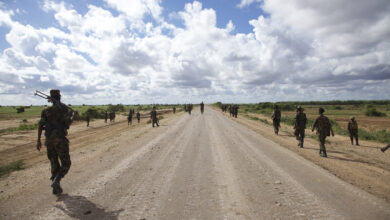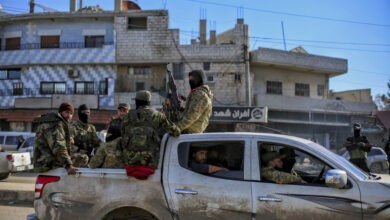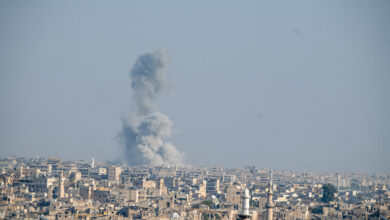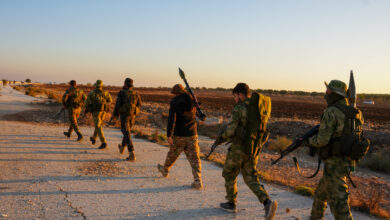IS Attacks Kill 30 Pro-Government Forces in Syria: Monitor
Islamic State group attacks killed at least 30 pro-government forces and soldiers in the Syrian desert, a war monitor said Wednesday, in one of the deadliest such assaults this year.
The Britain-based Syrian Observatory for Human Rights said there had been “30 dead, four of them soldiers and 26 from the National Defence Forces, in simultaneous attacks carried out by the Islamic State group on Wednesday morning on checkpoints and military positions” in the Syrian desert.
The attacks took place in locations between Raqa, Homs, and Deir Ezzor, added the Observatory, which has a vast network of sources on the ground.
Observatory chief Rami Abdel Rahman warned the toll could rise, citing an unspecified number of wounded, some in serious condition.
The war monitor said Russian warplanes launched strikes on IS positions in the desert, reporting casualties among the jihadists.
IS proclaimed a “caliphate” in June 2014 across swathes of Syria and Iraq and launched a reign of terror.
It was defeated territorially in Syria in 2019 but its remnants continue to carry out deadly hit-and-run attacks and ambushes, particularly from desert hideouts, targeting both pro-government forces and Kurdish-led fighters.
IS was blamed for a string of deadly attacks on government loyalists earlier this year.
In August, 33 Syrian soldiers were killed when IS ambushed their bus in the desert near Mayadeen, in Deir Ezzor province, the Observatory said at the time.
Days earlier, 10 loyalists were killed in an IS attack in Raqa province, the jihadists’ former stronghold in Syria, the Observatory reported.
Also in August, the jihadists attacked a convoy of oil tanker trucks guarded by the army in the Syrian desert, killing seven people including two civilians.
The same month, IS announced the death of its leader and named his replacement — the group’s fifth chief — as Abu Hafs al-Hashimi al-Qurashi.
Syria’s war broke out after President Bashar al-Assad‘s government crushed peaceful pro-democracy protests in 2011 and then drew in foreign powers and global jihadists.
The conflict has killed more than 500,000 people and driven half of the country’s pre-war population from their homes.
Damascus initially lost control over much of Syria to opposition factions, Kurdish fighters, and IS group jihadists.
However, the army gradually clawed back ground with support from key ally Iran and Lebanon’s Hezbollah group, while Russian intervention since September 2015 turned the tide in the government’s favor, and Damascus now controls around two-thirds of the country.












